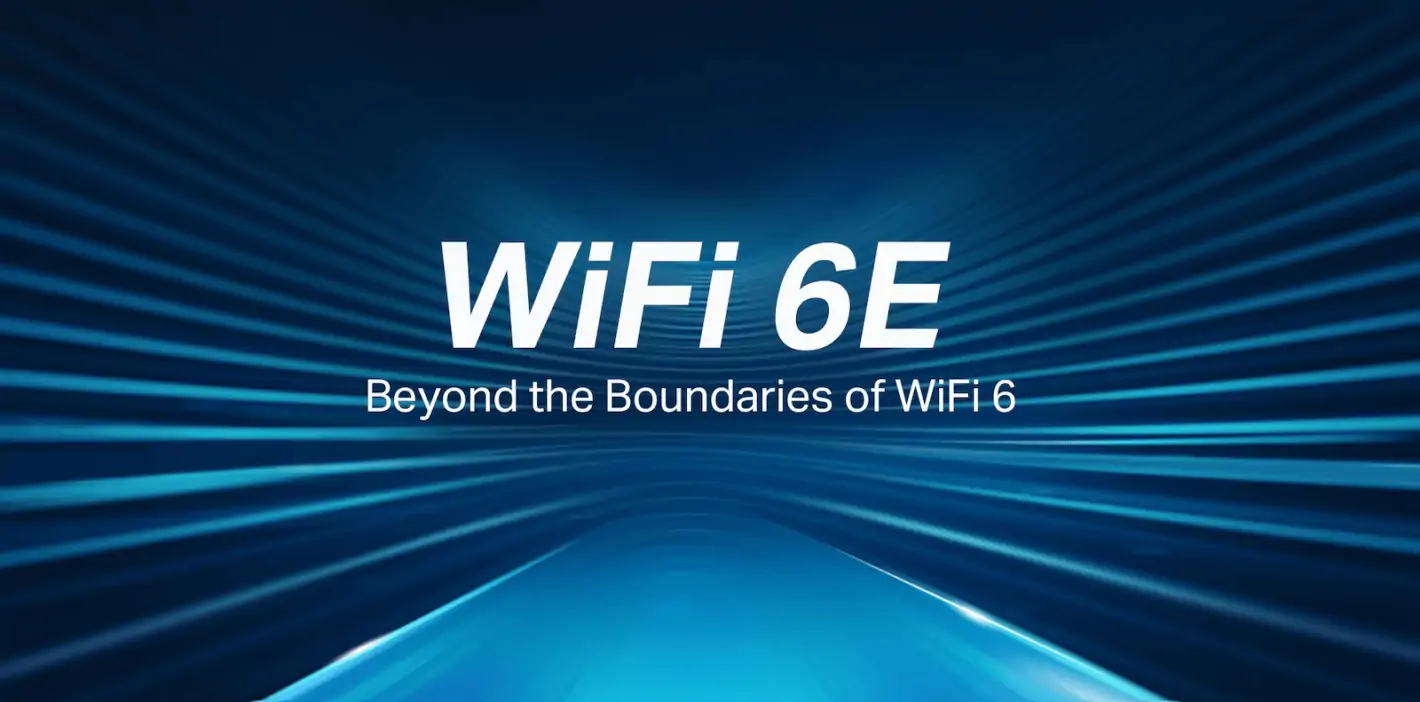When examining wireless routers, you may observe both WiFi 6 and WiFi 6E. These two are closely related generations of WiFi, as indicated by their names, but there are distinctions that are important to note. In 2020, the WiFi Alliance declared that WiFi 6 products have the capability to utilize the 6GHz wireless spectrum. This essentially means that WiFi 6E is akin to WiFi 6, but with the added feature of access to higher-spectrum frequencies. Consequently, users can anticipate faster internet speeds and reduced latency when utilizing the 6GHz WiFi.
WiFi 6 vs WiFi 6E
When WiFi 6 first became a thing, aka IEEE 802.11ax, it was limited to lower wireless spectrum. At either 2.4GHz or 5GHz. Which is what most routers already support. On 2.4GHz, you’re sharing three channels with yourself, your family, and your neighbors. Which can lead to some severe congestion.
If you’ve ever been knocked off of a call or experienced very slow internet, that is why. And it’s not just because of what is connected in your home and your neighborhood. As your neighbors that have their networks in range of your home, are also competing for the same bandwidth in the same limited channels.
In April 2020, the FCC voted to open up 6GHz for unlicensed use. That basically means that now WiFi can be used on the 6GHz spectrum, in addition to 5GHz and 2.4GHz. That opens up even more airwaves, so you should have less trouble with bandwidth. This is the most significant spectrum addition to WiFi since 1989.
Obviously, on paper, the jump from 5GHz to 6GHz doesn’t sound like a lot. But it does quadruple the amount of airwaves available for routers and smart devices, which is going to result in less signal interference.
Basically, the difference between WiFi 6 and WiFi 6E is 6GHz. WiFi 6E has all of the same features that WiFi 6 has, but now, with 6GHz WiFi, it is going to result in even faster speeds and lower latency.
Which is better?
So, which version of WiFi is better? Well, that’ll be WiFi 6E. While adding 6GHz spectrum to WiFi 6 may not sound like a big deal. It really is. This is going to open up faster speeds. Typically, the higher the spectrum, the faster the speeds are, but the smaller the coverage. So 2.4GHz is ideal for doorbells, smart lights, and such, as the coverage is more significant. But 5GHz and even 6GHz is better for your laptops and smartphones.
What are some of the benefits of WiFi 6E?
The biggest benefit is the addition of 6GHz for WiFi connectivity. That band is going to allow for speeds over 1Gbps. Along with that, you’re also going to get lower latency. Some WiFi 6E networks are able to provide less than one millisecond latency, which is very important for gaming, video calls, and even virtual reality. That is going to get rid of the lag that we have all experienced in the past year of working from home.
On top of that, the other big advantage that you will likely notice is the capacity of your network. With homes adding more and more devices to their home network, this is becoming a much bigger deal than in previous years. With these faster speeds and better capacity, homes will be able to have the next-generation computing experiences that we’ve seen at shows like CES and MWC, but inside their home.
For normal people, this means that multiple people can watch 4K Netflix or 4K YouTube without any buffering or being kicked off of the network.
There’s really only one downside to WiFi 6E, and that’s 6GHz WiFi. Because 6GHz is a higher-band, it means that the coverage is not as great. This is why 6GHz is generally better for those devices that need speed over coverage. Like your laptop or your smartphone. At the same time, smart home products should stick to 2.4GHz.
What are some disadvantages of WiFi 6E?
One of the major disadvantages of WiFi 6E is going to be the range. The 6GHz band has a shorter wavelength than the 5GHz and 2.4GHz that we’ve been using for years. Generally, the lower the band, the further it can cover. And the higher the band, the faster it can operate. This is why we see much lower speeds on 2.4GHz versus 5GHz and 6GHz.
Additionally, WiFi 6E is not as great at penetrating walls and other obstructions because it does have a shorter wavelength. These are things that need to be considered when upgrading to WiFi 6E. But keep in mind that you won’t be using solely WiFi 6E, as many mesh routers are able to intelligently switch between 2.4GHz, 5GHz, and 6GHz to give you the best experience.
These are the same type of disadvantages we see with mmWave in mobile networks for 5G. Carriers like Verizon, AT&T and T-Mobile all use mmWave for the absolute fastest speeds – that’s where you see the gigabits per second from each carrier. These are much shorter wavelengths, as we’re talking around 40GHz. This is why, with mmWave, if the wind blows a little too hard, you can lose your 5G UW or 5G UC connection and drop back down to regular 5G. WiFi 6E isn’t quite that bad. Just don’t expect it to cover an entire office floor, but it should be able to cover most apartments and homes with ease.
How fast is WiFi 6E?
So the theoretical top speed for WiFi 6E is the same as WiFi 6. And that is 9.6Gbps. However, you will likely never, ever see that kind of speed on your WiFi network. Because that is in perfect condition, and that won’t happen at your home.
However, in real-world testing, NETGEAR found that WiFi 6E is about 25% faster than WiFi 6. And that’s where the 6GHz spectrum comes into play. You will likely see up to 2Gbps speeds on WiFi 6E. But again, there are a lot of factors that go into that. For one, your ISP needs to be delivering at least 2Gbps to your home. And currently, many ISPs are not even delivering a single Gigabit, nevermind multi-gigabit connections. That will change in the coming years, though.
Doesn’t 5G use 6GHz too?
So, here is where things get interesting for WiFi 6E.
The FCC didn’t actually open up any new WiFi spectrum for 6E. Instead, it opened up a new “unlicensed” spectrum. This means you don’t need a license to use that spectrum. This also means that other devices could use this same spectrum that WiFi 6E wants to use. And yes, that does include 5G devices.
Carriers like Verizon have been using unlicensed spectrum for its 5G Ultrawide Band network or 5G UWB. The much higher frequencies allow for much faster speeds and lower latency, as we’ve explained with 6GHz already. So, these mobile networks could use up some of the spectrum that WiFI 6E wants.
But will this really lead to any congestion on WiFi 6E? Probably not. Wireless analyst, Phil Solis has said that “there’s so much spectrum in the 6GHz band that there should be room for both.” He added that “you’re not going to see macrocells using 6GHz”. Basically, while carriers could use this 6GHz spectrum for 5G, they will likely use a much higher spectrum paired with their low-band spectrum for coverage and speeds.
WiFi 6E is basically a “US only” thing
Currently, only the US has approved WiFi 6E to use 6GHz for WiFi. And since that is the main differentiator between WiFi 6 and WiFi 6E, that means that it is only a thing in the US.
For WiFi 6E to take off in other countries, we’ll need to see those countries open up 6GHz as well. In Europe it’ll be very slow going. Each individual country needs to open up 6GHz WiFi, and then the European Commission needs to do it, too. But that could happen very soon.
Because this is really only a thing in the US, it means the adoption of WiFi 6E is going to be slow, too, since gadgets are typically shipped globally.
How to get WiFi 6E?
Like with WiFi 6, you will need new hardware to use WiFi 6E. Even though it is as simple as supporting another spectrum band, routers were not initially designed for WiFi 6E. However, newer routers that were released in late 2020 and later, will support WiFi 6 and WiFi 6E.
Luckily, WiFi 6E devices are also compatible with older versions of WiFi. This is pretty common among technology, though, so this isn’t a big surprise. But it does mean that if you connect a device that does not have support for WiFi 6E, you’ll still be able to use it on your network.
Will I need a new router?
The short answer here is yes.
Unless you have bought a very new router, one that launched within the last couple of years, you will likely need a new one. The number of WiFi 6E-compatible routers is actually pretty small at this point. But that number is going to rise in the near future. As more and more people look to adopt WiFi 6E.
WiFi 6E-compatible devices
To take full advantage of WiFi 6E, you’ll need routers that support it, as well as smartphones and laptops too. Here are the latest devices that support WiFi 6E.
Smartphones
Samsung Galaxy S21, S21+, S21 Ultra, S21 FE and later
Xiaomi Mi 11 and later
OnePlus 9 and later
iPhone 13 series and later
Google Pixel 6, Pixel 6 Pro and later
Motorola Edge 2022 and later
Motorola Razr 2022 and later
Routers
ASUS ROG Rapture GT-AXE11000
Linksys Hydra Pro 6E
Linksys Velop Atlas Max 6E
ASUS ZenWiFi ET8
Netgear Nighthawk RAXE500
What about WiFi 7?
You may have seen recently that newer smartphones, tablets, and even laptops are launching with support for WiFi 7. It’s an upcoming WiFi standard that isn’t really widely used yet and won’t be for a few years, but it is good to see companies future-proofing our products.
WiFi 7 is going to have extremely high throughput of up to 46Gbps, compared to 9.6Gbps on WiFi 6E and about 6.9Gbps on WiFi 6. It’ll be about 4.8x faster than WiFi 6 and about 13x faster than WiFi 5, which is going to unlock faster speeds and more scenarios than ever before.
On top of the faster speeds, WiFi 7 will also offer up to 4x lower latency and up to 5x more network capacity, thanks to 320MHz and MLO.
Should you upgrade to WiFi 6E?
Yes.
If you are looking to replace the router at your home, then yes, it’s a good idea to get a WiFi 6E router. Since it’s not something that you will be replacing all that often, like a smartphone or even a laptop, it’s better to get the best possible router now than to get something that is a bit behind like a regular WiFi 6 router.
Not to mention the fact that the way that technology moves, if you wait for WiFi 6E to get better, you’re going to miss out and WiFi 7 will be nearly here.
So, to future-proof your WiFi network, yes, get a WiFi 6E router now for your home. It’s backward compatible, so you will be able to use older devices that don’t support WiFi 6E with it.



